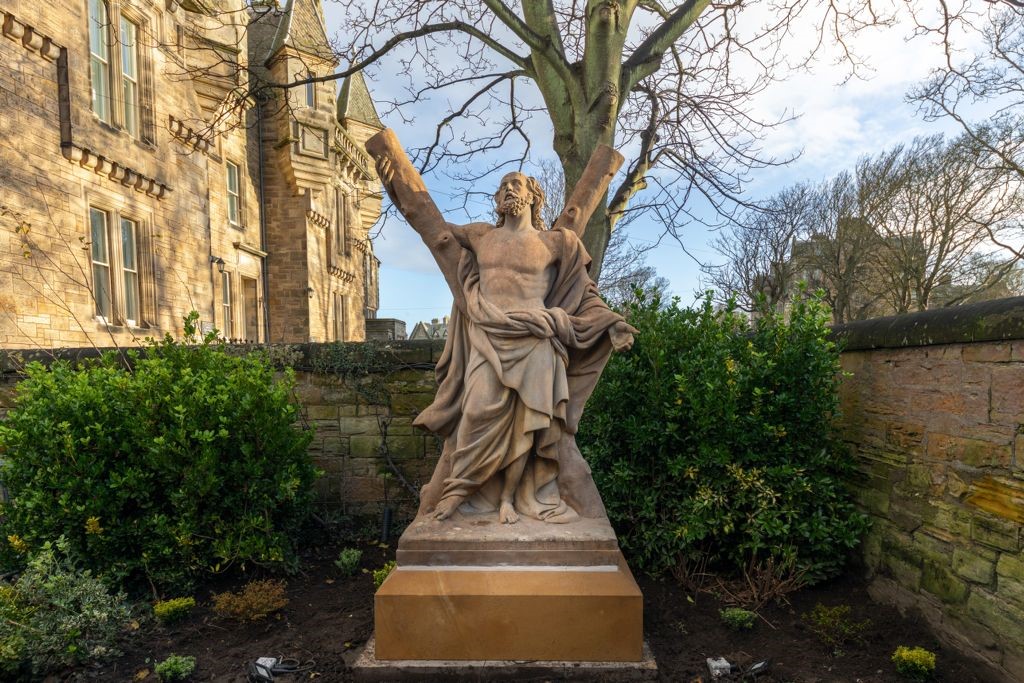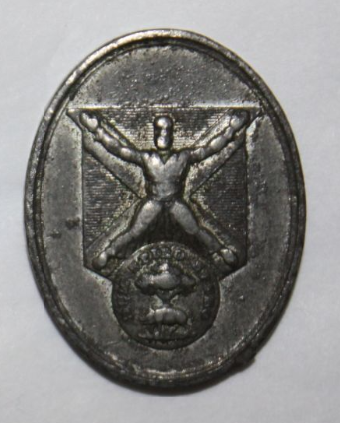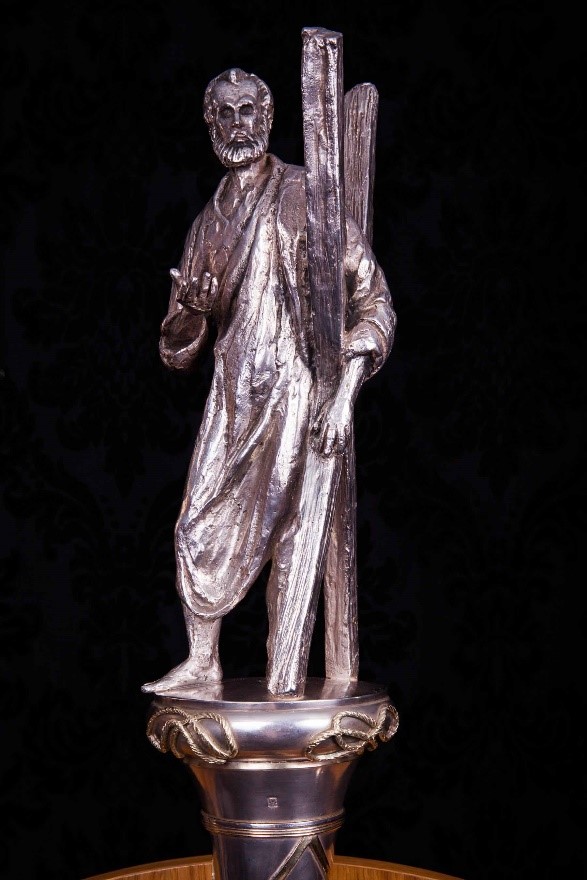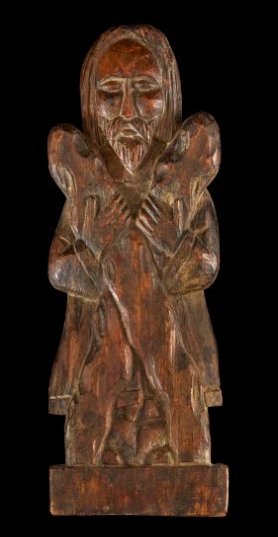
The 30th November is a national bank holiday and special day – it is Scotland’s Official National Day to celebrate our patron saint; St Andrew.
It is also special as our lovely town and University is named after St Andrew, but do you know who he was? And how a small town on the East Coast of Fife came to be named after him?
Well let me enlighten you…
St Andrew, also known as Saint Andrew the Apostle, was one of the twelve disciples of Jesus and brother to St Peter. He was a fisherman and was called on with Peter by Jesus to be ’fishers of men’. He is also said to be the first disciple of Jesus.

and St Andrew crucified across a shield shaped Saltire (HC700)
Courtesy of the University of St Andrews Libraries and Museums
Andrew is said to have been martyred by crucifixion, on an X shaped cross or saltire, hence the saltire cross of St Andrew on the Scottish national flag. An interesting fact, as well as Scotland’s patron saint, he is also one of Russia’s, Greece’s, and Barbados!
The remains of St Andrews were later taken to Patras in Greece. Legend then has it, that one of the monks there, St Regulus (also known as St Rule), was advised in a dream to hide some of the bones. The bones were moved from Patras to Constantinople on the orders of the Holy Roman Emperor Constanius II in or around 357 to sit in the Church of the Holy Apostles there.
St Regulus then had a second dream, where he was told by an angel to take some of the bones to ‘the ends of the earth’ to protect them and build a shrine there. He set off, taking a kneecap, an upper arm bone, three fingers and a tooth from St Andrew to find a safe place for them.
His journey however did not go smoothly. St Rule was shipwrecked off the coast of Fife and brought the relics to our small town on the East Fife Coast. At that time, St Andrews was known as Kilrymont – church of the king’s mounth (mounth meaning a headland) and from what we gather, already a place of importance among the Celtic church.
St Rule then established a shrine with St Andrew’s bones at the site of where the St Andrews Cathedral now sits. St Rule’s Tower is named after him and as you all likely know, Regs Hall of Residence comes from St Regulus.

Although the legend is a great story, it is more likely that the relics were probably brought to Britain in 597 as part of the Augustine Mission, and then in 732 to Fife, by Bishop Acca of Hexham, a well-known collector of religious relics at the time.
St Rules Church was started in 1130 for a new order of Augustinian Priors who were based there. However, it soon became clear it would be too small and work on St Andrews Cathedral began in 1160. It was not consecrated until 1318 by Robert Bruce and it was the largest church, if not the largest building in all of Scotland. A fitting place to house the relics of St Andrew
The status of the town increased dramatically with the building of the Cathedral, and the name St Andrews became consistently attached to the town by about 1200, rather than the old name of Kilrymont, due to the growing cult attached to the bones of St Andrew being held at the Cathedral.
St Andrew however was not made the official patron saint of Scotland until 1320 at the signing of the Declaration of Arbroath, 2 years after St Andrews Cathedral was consecrated!

(HC2011.7)
Courtesy of the University of St Andrews Libraries and Museums
You may wonder where the relics of St Andrew that were housed at the Cathedral are today. During the Reformation in the 1500’s, in 1559 John Knox preached a famous fiery sermon at the Holy Trinity Church on South Street which roused the congregation to take up arms and come and destroy the interior of the Cathedral. It was at this time the relics disappeared, and no one knows where they went. A sad ending to our tale, however the name and relevance of St Andrew live on in the name of our lovely town.
Whatever you plan to do this St Andrews day, we hope you enjoy yourselves and remember the story of how St Andrew came to be our patron saint, and our fair town’s name.
Written by Sophie Belau-Conlon, Visitor Services Supervisor, Museums of the University of St Andrews